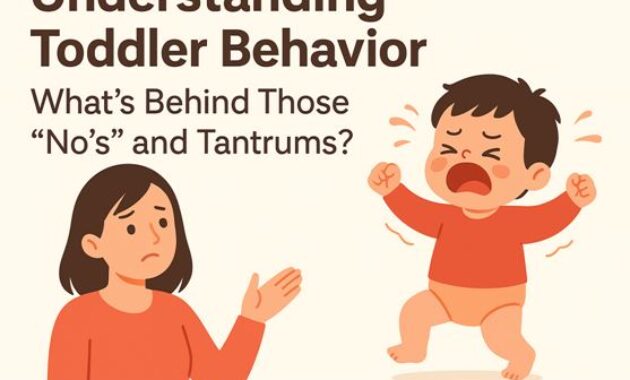Introduction: The Mystery of Toddler “No’s”
If you are a parent of a toddler, you’ve probably heard the word “no” more times than you can count. From refusing to eat vegetables to throwing themselves on the floor in protest, toddlers can test patience in ways you never imagined. But what’s really happening behind those “no’s” and tantrums?
Toddlerhood is a time of rapid brain development, independence, and emotional growth. Understanding your child’s behavior is not just about discipline—it’s about nurturing their future well-being. In fact, as we explain in our article Why Parenting Matters: Building a Healthier, Safer Future for Your Child, the foundation you create now has lifelong effects.
Why Toddlers Say “No”
The word no is one of the first signs of independence. For toddlers, saying no:
- Gives them a sense of control.
- Helps them test boundaries.
- Shows they are developing their own opinions.
This stage, although challenging, is completely normal. Parents should see it as proof that their child is learning to separate their identity and make choices.
💡 Parent Tip: Instead of battling every “no,” give limited choices—like “Do you want the red cup or the blue one?” This reduces power struggles while supporting independence.
Understanding Tantrums: The Emotional Storms
Tantrums are often the biggest challenge in parenting toddlers. They can involve crying, stomping, screaming, or even rolling on the floor. But tantrums are not always bad—they are a natural outlet for overwhelming emotions.
Reasons toddlers throw tantrums include:
- Frustration when they can’t express themselves in words.
- Tiredness, hunger, or overstimulation.
- Struggling with transitions, like leaving the playground or bedtime.
Although exhausting, tantrums are a healthy way for children to release emotions and learn coping strategies. Parents can guide them by staying calm and consistent.
You can also set routines around meals, play, and rest. Our guide on Healthy Habits, Home Safety & Nutrition Tips for Toddlers shares strategies to prevent meltdowns by keeping children nourished, safe, and balanced.
Toddler Behavior Red Flags
While tantrums and defiance are typical, there are certain warning signs parents should not ignore.
Possible red flags include:
- Tantrums that are extreme, prolonged, or violent.
- Lack of eye contact or no response to their name.
- Limited language development by age 2 (less than 50 words).
- No interest in social play or interaction with others.
- Repetitive movements or unusual fixation on objects.
If you notice these patterns consistently, it’s worth discussing with your pediatrician. Early awareness and support make a big difference.
Normal vs. Abnormal Behavior in 2-Year-Olds
It’s important to know what’s “normal” and what may require attention:
✅ Normal Behavior
- Saying “no” frequently.
- Short, intense tantrums.
- Picky eating habits.
- Showing independence (wanting to dress themselves).
- Mood swings that change quickly.
⚠️ Concerning Behavior
- No words or very limited speech at 2 years.
- Little to no interest in interacting with parents or peers.
- Extremely aggressive behavior (biting, hitting, constant destruction).
- Not pointing or showing objects to share interest.
Toddler Behavior vs. Autism: Spotting the Difference
Parents often worry whether tantrums or defiance could be signs of autism. While autism spectrum disorder (ASD) is complex and requires professional assessment, here are some key distinctions:
- Typical toddler tantrums: Triggered by frustration, hunger, tiredness. Child often seeks comfort once calm.
- Autism-related concerns: Limited eye contact, delayed speech, repetitive actions, lack of interest in sharing attention or play.
Early detection matters. If you suspect something beyond typical toddler behavior, seek guidance instead of waiting. Supportive parenting combined with professional evaluation leads to better outcomes.
Helping Your Toddler Through Emotional Growth
Parenting toddlers requires patience, empathy, and structure. Here are strategies that help:
- Validate emotions – Say, “I see you are upset because we can’t stay at the park.” Naming feelings helps them feel understood.
- Set clear boundaries – Calm but firm limits give children security.
- Offer choices – Giving simple choices reduces power struggles.
- Model calm behavior – Children mirror your reactions.
- Encourage routines – Predictability reduces anxiety and tantrums.
- Celebrate milestones – Small wins like using new words or sharing toys deserve encouragement.
For more ways to keep your little one safe while they explore, check our guide: Essential Health & Safety Tips Every Parent Should Know in 2025.
Parenting Beyond Behavior: Teaching Values Early
Toddlerhood is not just about managing tantrums—it’s about planting seeds of kindness, respect, and cultural understanding. Family traditions and celebrations can play a powerful role.
- Festivals like Janmashtami 2025 allow children to enjoy creativity and storytelling.
- National events such as Independence Day 2025 help instill values of freedom, unity, and responsibility.
Engaging toddlers in these celebrations builds a sense of belonging and identity—qualities that help balance emotional ups and downs.
Final Thoughts
Toddlerhood is a whirlwind of “no’s,” tantrums, laughter, and growth. Most behaviors are part of normal development and reflect your child’s journey toward independence. However, staying mindful of red flags ensures you don’t miss signs that may require extra attention.
With patience, empathy, and consistent parenting, you can turn even the toughest tantrums into learning moments. And remember, the bond you build now is shaping not only today’s toddler but tomorrow’s confident, emotionally healthy adult.
✨ Key Takeaway for Parents: Saying “no” and throwing tantrums are milestones—not just misbehavior. Guide your toddler with love, structure, and attention, while using family traditions, healthy routines, and safety habits to create a secure, happy childhood.
Reference :- Mayo Clinic.
Disclaimer: This content was automatically imported from a third-party source via RSS feed. The original source is: https://drdad.in/understanding-toddler-behavior-whats-behind-those-nos-and-tantrums/. xn--babytilbehr-pgb.com does not claim ownership of this content. All rights remain with the original publisher.
